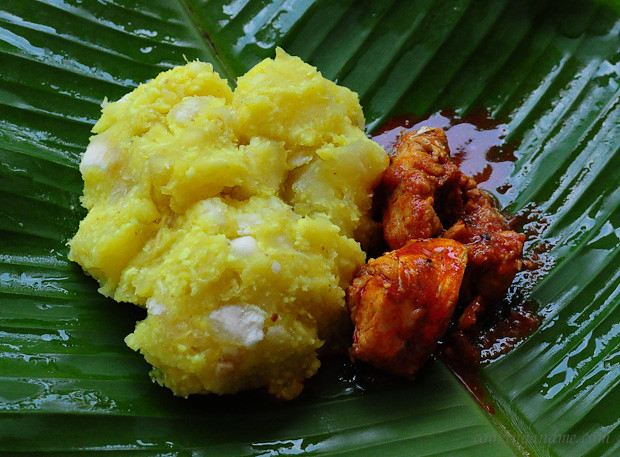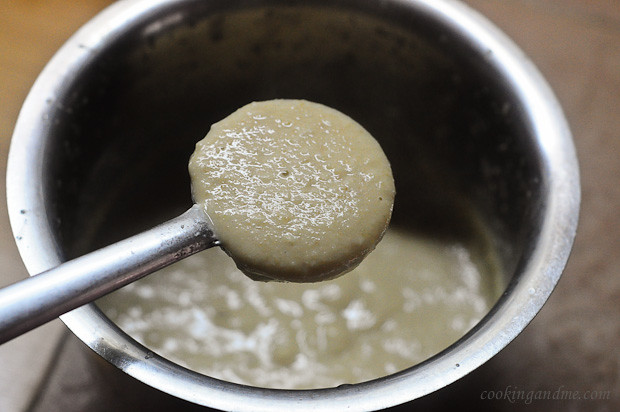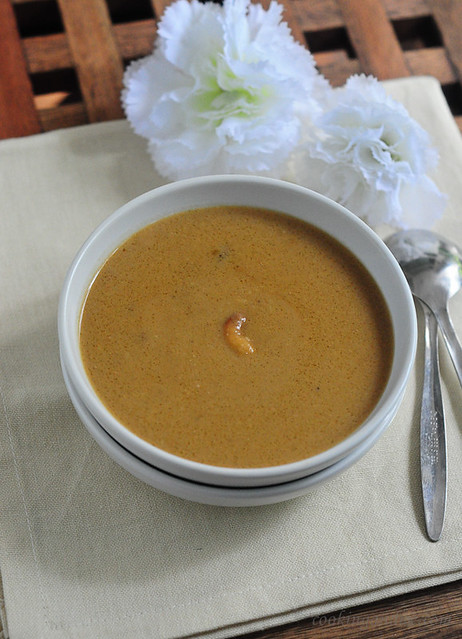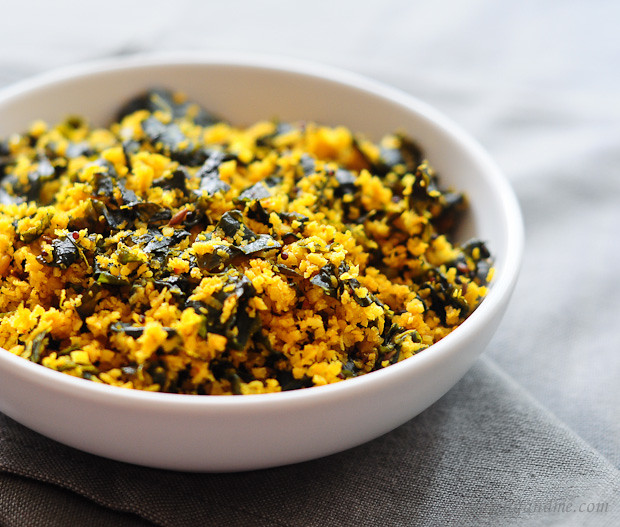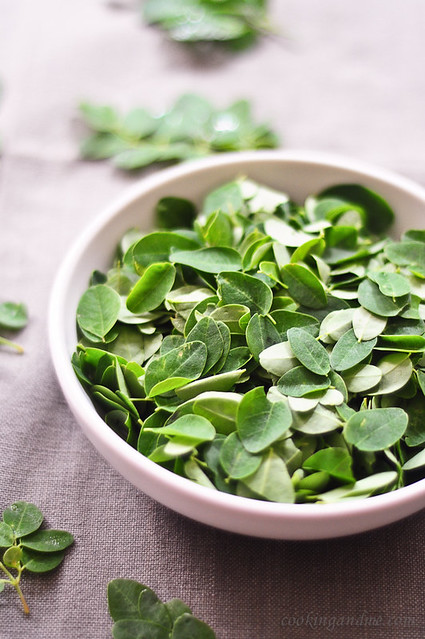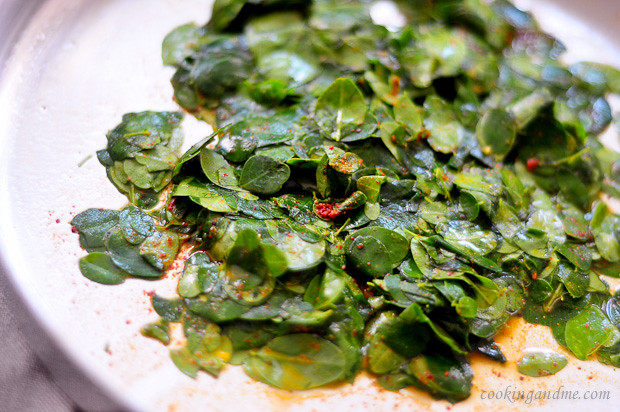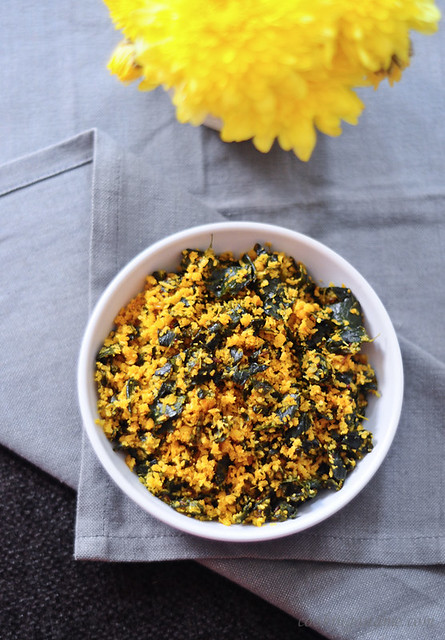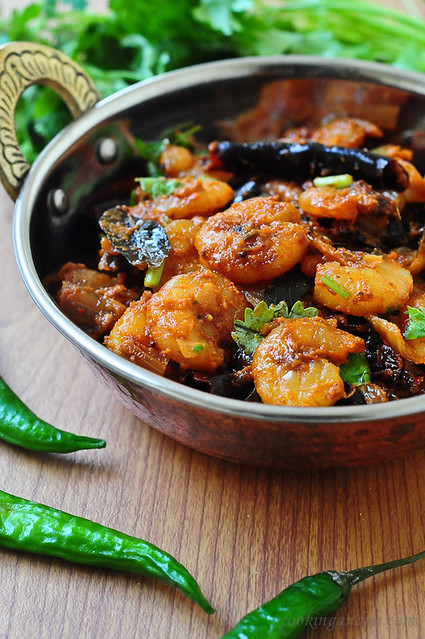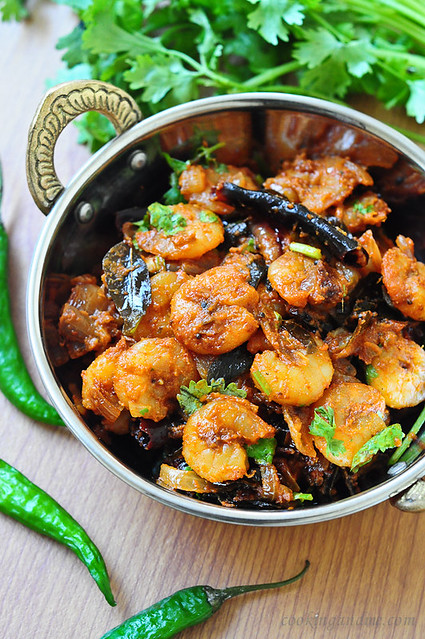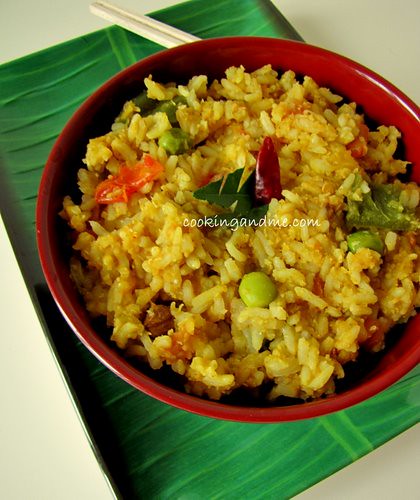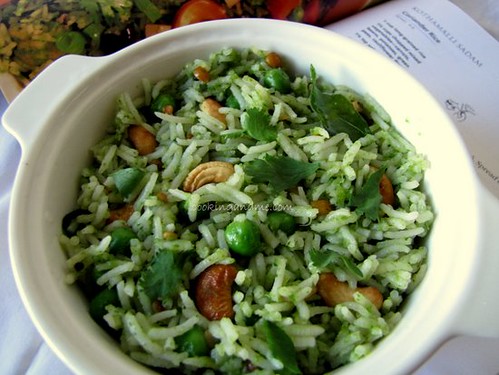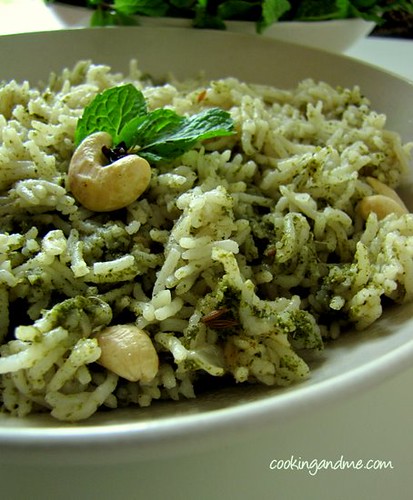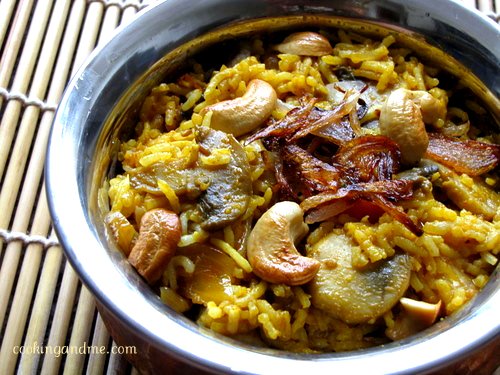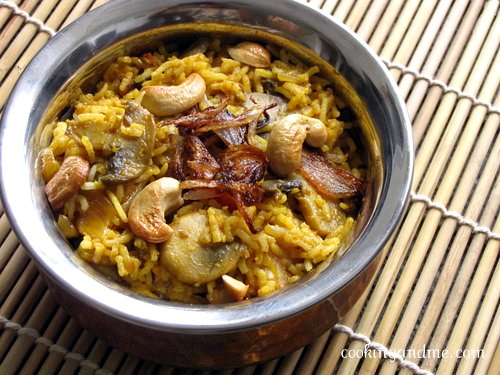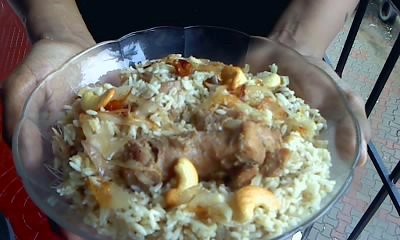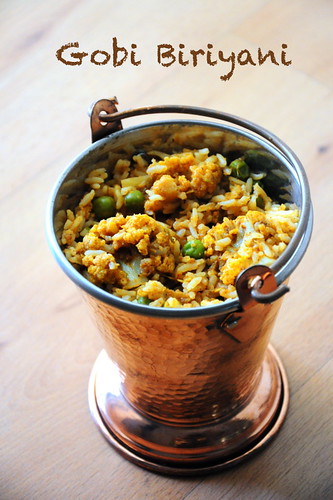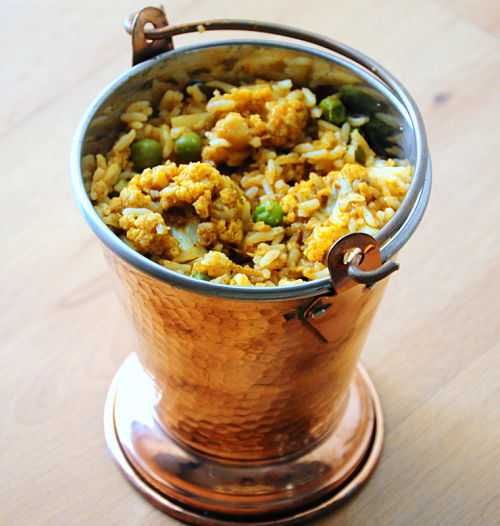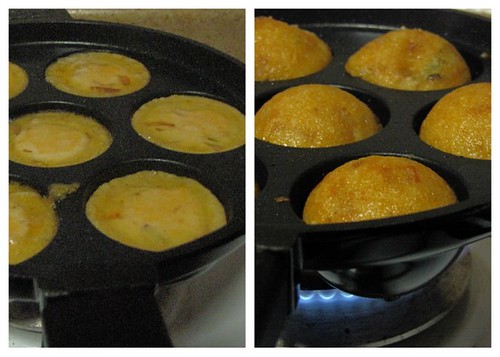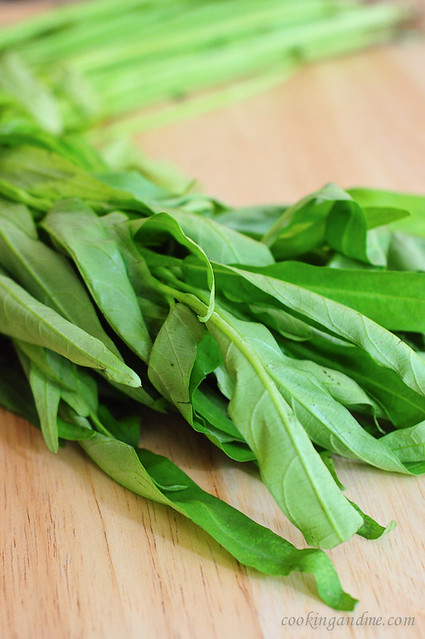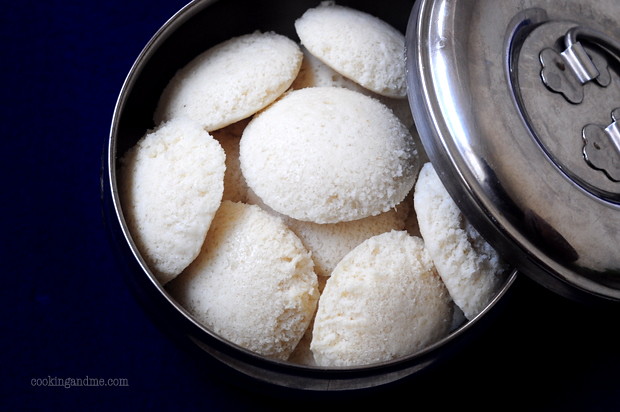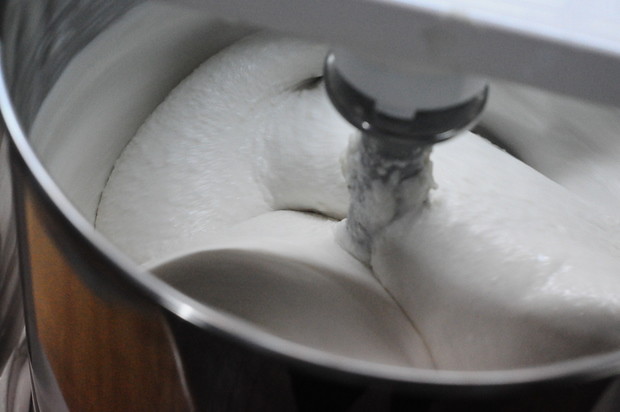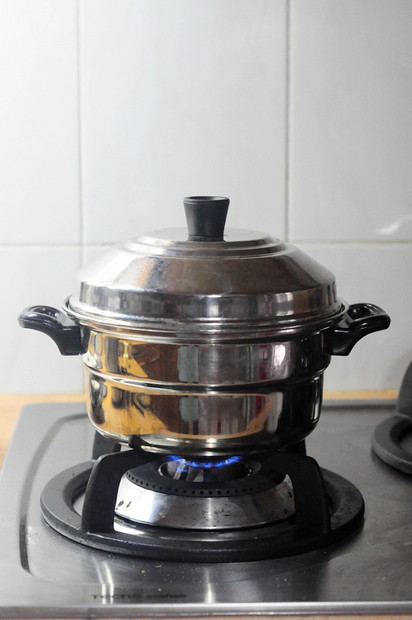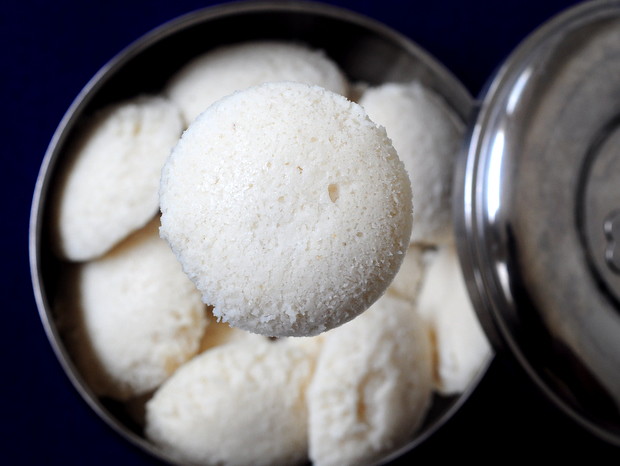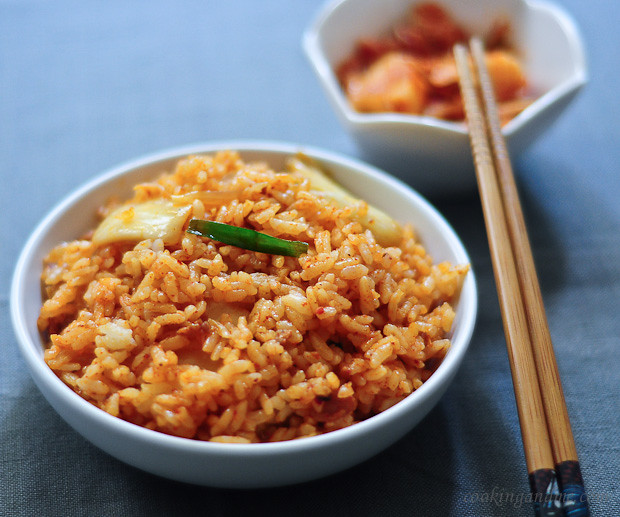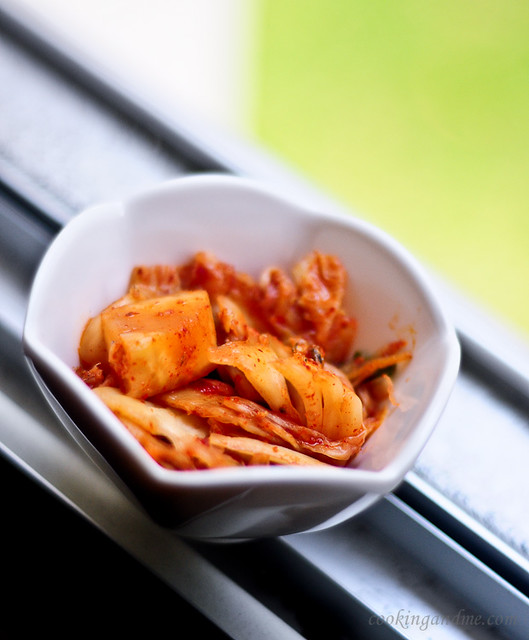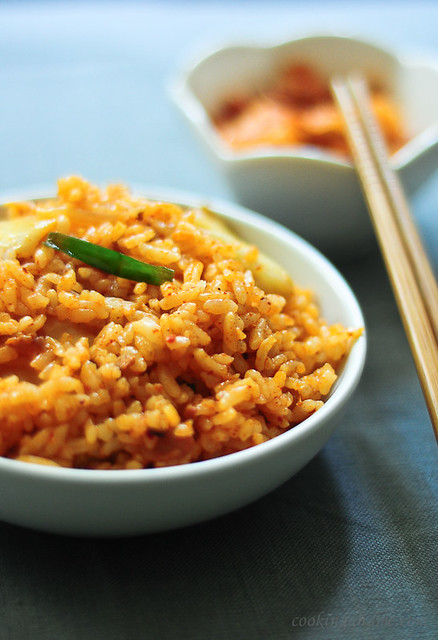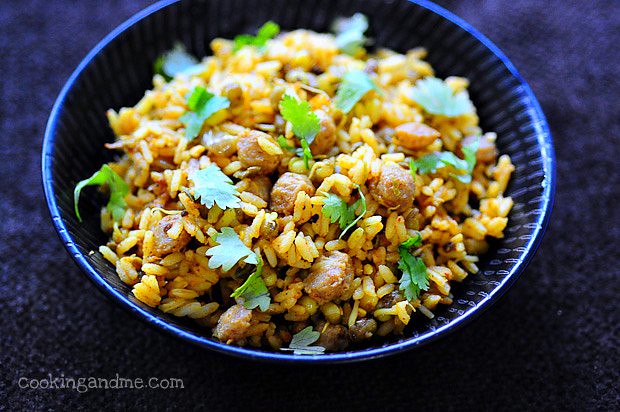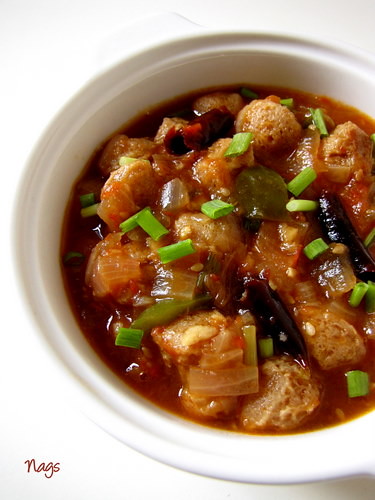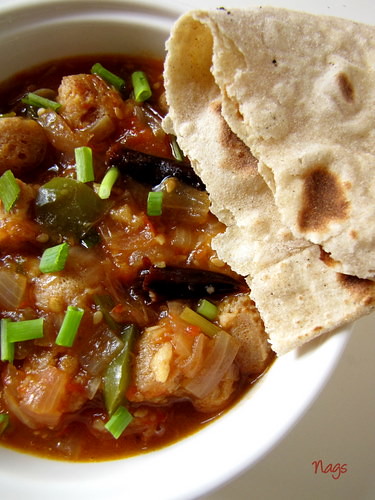Kappayum Meenum! Need I say more? Every person who grew up in Kerala must miss this when they are out of their nests. Oh, unless they are vegetarian. Then they would miss... I don't know! What do vegetarians miss when they leave Kerala? Enlighten me.
Anyway, I miss this. Among other things of course but this I miss one of the most because it represents home so much to me. Suma, our maid, brought some kappayum meenum for sis and I and of course I took the banana leaf that happened to lie around in amma's kitchen and clicked it. I later asked amma for the recipe so I am not sure if this is hers or Suma's. Either ways, it works, trust them if not me.
Meen Mulakarachathu, as we call it in Kottayam, is not my favourite Kerala fish dish but with kappa, its unbeatable. Its called by so many names by the way - Meen Vevichathu, Meen Mulakittathu, and even Meen Pattichathu. All one and the same folks!
Kappa Puzhukku / Boiled Tapioca Kerala Style
Ingredients:
1 kilo tapioca / kappa
3/4 cup grated coconut
5 green chillies
5 flakes of garlic
5 shallots
1/2 tsp turmeric powder
1/2 tsp cumin seeds / jeera / jeerakam
3 sprigs of curry leaves
3 tbsp coconut oil
Salt to taste
How Its Made:
1. Peel and wash the tapioca well. Cut into small cubes and add to a pan with water 3" inches higher than the level of tapioca. Bring to boil and add salt. Let it simmer on medium-low flame until the tapioca is almost soft.
2. Meanwhile, grind the other ingredients except curry leaves and oil. Once the tapioca is almost soft (just short of mushy stage), add the ground paste, along wtih the coconut oil and curry leaves. Mix well and let it heat through. (Alternately, you can heat oil in another pan, add curry leaves to it and then mix with the tapioca).
3. Remove from fire and serve with tangy and spicy fish curry / meen vevichathu.
Meen Mulakarachathu / Meen Vevichathu / Meen Mulakittathu / Kerala Style Fish Curry
Ingredients:
1/2 kg any firm fish, cleaned and cubed (ideally with bones)
3 tbsp red chilli powder / mulaku podi (use Kashmiri chilli powder or a mix of that and the regular one if you can't take heat)
1 tbsp coriander powder / malli podi
3 pieces of kudam puli
1/2 tsp turmeric powder
1/4 tsp fenugreek seeds / uluva
3 sprigs of curry leaves
5 shallots
5 garlic cloves
1" piece of finger
3 green chillies, slit
3 tbsp coconut oil
How Its Made:
1. Crush shallots, ginger, and garlic together in a pestle and mortar (or grind together).
2. Heat oil in a pan and add the fenugreek seeds. When they start to brown, add the crushed ginger-garlic-shallot paste. Fry for 10 seconds and then add the coriander powder, followed by the red chilli powder. Fry for another 10 seconds. Add curry leaves and green chillies and mix together well.
3. Now add the turmeric powder and the kudam puli with 2 cups water and salt. Bring to boil and let it boil for 2-3 mins before adding the fish.
4. Simmer on low heat for another 10-12 mins until the fish is cooked through. Check for salt and tanginess and add more of either if necessary.
Goes best with kappa puzhukku.
Being away for Onam for the past 6 years, one would imagine I would be used to the acute feeling of homesickness each time. Nope. Doesn't look like that's happening.
Although I had resolved to get more involved in cooking for festivals, I failed miserably for Onam this year. A sudden work trip took me away from home and I didn't even have my camera with me to do something about it.
Anyway, what's all that in the face of a good, warm (or cold) bowl of payasam, eh? Any payasam with sharkkara (vellam or jaggery) is my absolute favourite. Of course, TH can't stand jaggery and won't even come near anything made with it but each time I go home to Kerala, I bring back two of these jaggery balls and store them in the fridge. Leave out for a few mins before grating with a knife if you like to do the same. I prefer this darker, no-salt version to the white terribly salty versions that seem to be available everywhere outside Kerala. Use this for a genuine Kerala flavour to anything with jaggery.
This jaggery is also the reason for the deep brown colour for my sweet (kozhukkattai) modak poornam filling.
Although kadala parippu payasam is also a favourite, I decided to go with cheru payar (moong dal or pasi paruppu) this time.
Cherupayar Payasam (Kerala Parippu Payasam)
Ingredients:
1/4 cup of cheru payar / pasi paruppu / moong dal
3/4 cup more or less of grated jaggery (or brown sugar, but it's a poor substitute)
3 heaping tbsp of ghee
10 plain, unsalted cashewnuts
A few of raisins
1 cup of thick coconut milk (onnaam paal)
3-4 cups of thin coconut milk (rendaam paal)
4-5 cardamom, crushed
How I Made It:
1. Roast the parippu in a dry pan until it turns golden brown.
2. Add the thin coconut milk (rendaam paal) and pressure cook for 5-6 whistles until mushy.
In hindsight, I probably should have left some whole dal in there too, for some texture. I think I mashed it up too much.
3. Add some water to the grated jaggery and heat it on medium flame until it begins to melt. Stir well until the jaggery fully melts, strain, and mix in with the cooked dal.
4. Return the dal mixture to the fire, bring to boil and add the thick coconut milk. Heat through, add the crushed cardamom and remove from fire. Do not boil after adding the thick coconut milk.
5. Now, heat the ghee in a pan and add the cashew nuts and raisins. When the nuts turn golden brown and the raisins have puffed up, remove and add to the payasam. Mix well.
Notes:
1. I used canned coconut milk so I think it was thicker than I expected. My payasam turned out thicker than I am used to eating back home but it was still very tasty and I couldn't sense any difference in flavour.
2. Don't mush up the dal too much, leave some bits whole for some added texture.
Drum stick leaves will always remind me of my maternal grand mom and her immense patience when it came to cooking. As I type this, I can imagine her squatting on the kitchen floor, her tongue flicking out now and then to wet her lips as she plucks out each leaf with great concentration.
Needless to say, I did this extremely time-consuming task watching tv and recruited TH to help me too. He did it with an expression that seemed to say "why are we doing this again? I don't feel compelled to eat this thing if prepping it is such a pain you know". I ignored it and kept plucking diligently until I had a large plate full of fresh drum stick leaves.
Then I realised I didn't know how exactly aatha (amma's amma in Reddiar telugu) cooked this so I called amma. She told me you need to rub the leaves with the spices you are going to use and then cook in a low flame with water sprinkled over it. This is how amma makes most thoran although I cook the vegetable first before adding spices. For the drumstick leaves, I decided to go the aatha way.
Muringayila Thoran / Drumstick Leaves cooked with Coconut
Serves 2
Recipe Source: Amma, Aatha
Ingredients:
4 cups drumstick leaves muringayila
1 cup grated coconut (adjust amount to taste)
1 tsp red chilli powder
A large pinch of turmeric
2 shallots
1/2 tsp jeera / cumin powder
Salt to taste
1 tbsp coconut oil
1/4 tsp mustard seeds
How I Made It:
1. Remove the drum stick leaves from the stems. Wash thoroughly.
2. Add salt, turmeric and red chilli powder to the washed leaves. Set aside for 30 mins. It will let out water.
3. Grind coconut coarsely with the shallots and cumin powder.
4. Heat oil in a pan and add the mustard seeds. When they pop, add the marinated leaves, stir around to combine. Cook closed on low heat for about 5 mins. Open, add the ground coconut mixture and stir well again.
5. Cook closed for another 5-10 mins until the leaves are cooked through and soft. Make sure you mix in between to prevent browning at the bottom.
Serve with rice and any pulusu / kozhambu of choice.
I hardly ever cook non-vegetarian food but whatever little I have tried so far has come out super well, no idea why. When I was in Mountain View earlier this year and met up with Saks, the talk obviously turned to food and she mentioned how she loves Varsha's version of Kerala Style Spicy Prawns Roast. It sounded delicious and I made a mental bookmark.
I tried it a couple of months after getting back but never got around to posting it. Here it is, finally.
The process may seem a bit long-wound so I would recommend lining up all the ingredients so that you can add them in one by one. Preparation time is about 20 mins and cooking time another 20 so it doesn't take that long at all. Note that I got cleaned prawns so if you don't, then that will take extra time to prep.
Kerala-Style Chemmeen / Prawn Roast Recipe
Serves 4
Adapted from Will-O'-the-Wisp
Ingredients:
3 cups prawns, cleaned and deveined
2 tbsp coconut oil
1"piece cinnamon, 3 cloves and 2 cardamom pods coarsely powdered
1 tsp mustard seeds
1/2 tsp fenugreek seeds
1 tsp fennel seeds
3-4 dry red chillies, halved
a handful of curry leaves
2 tbsp small coconut pieces (thenga kothu)
1 tbsp minced ginger
1 tbsp minced garlic
2 cups peeled shallots (or use 2 onions)
3-4 green chillies
1 tomato, cut into small cubes
1-2 tsp vinegar
1 tsp red chilli powder (adjust to taste)
1 tsp coriander powder
1/4 tsp turmeric powder
1/2 tsp black pepper powder
1 tsp garam masala (optional)
Fresh coriander leaves / cilantro to garnish
Salt to taste
How I Made It:
1. Heat oil and add the ground cinnamon+cloves+cardamom. Fry for 1o seconds and add the mustard seeds, fennel, fenugreek seeds, and red chillies. Fry for another 2o seconds.
2. Next, add the curry leaves, coconut slices, minced ginger and garlic. Saute until the raw smell disappears - about 1 minute. Then add the shallots/onions and slit green chillies. Saute until the onions turn a light brown.
3. Next, add the cubed tomatoes and cook until the mixture turns mushy.
4. Meanwhile, mix the vinegar with some water and add the red chilli powder, coriander powder, pepper, and turmeric. Add this to the mixture on the stove. Mix well and cook until the oil separates at the sides of the pan - about 3-4 mins.
5. Now add the cleaned prawns and mix well. Cook covered on low heat for 10-12 mins until the prawns are cooked just right. Overcooking will harden them. Don't add water at any stage, the prawns will release water.
6. Add salt, sprinkle garam masala on top if using, and garnish with chopped coriander leaves.
Serve hot with steamed white rice.
4. Meanwhile, mix the vinegar with some water and add the red chilli powder, coriander powder, pepper, and turmeric. Add this to the mixture on the stove. Mix well and cook until the oil separates at the sides of the pan - about 3-4 mins.
5. Now add the cleaned prawns and mix well. Cook covered on low heat for 10-12 mins until the prawns are cooked just right. Overcooking will harden them. Don't add water at any stage, the prawns will release water.
6. Add salt, sprinkle garam masala on top if using, and garnish with chopped coriander leaves.
Serve hot with steamed white rice.
We don't celebrate pongal. Which explains why I am posting this traditional pongal festival recipe in March. I mean, how off the mark can you get? About 2 months, that's how much.
But like I said, we don't celebrate pongal, and by that I mean my family. TH's family definitely does, but nothing elaborate like at my sister's place. Mostly it involves making pongal of the savory kind and this sweet version, sakkarai pongal.
My mom makes it as and when she feels like. Usually, when we need a quick dessert for guests, sakkarai pongal gets made. Admittedly, its not my favourite sweet but recently. I had this tremendous craving that was quite inexplicable so I made a teeny weeny bit (TH hates it) and had it all by myself at around 10pm in the night, which explains the very not-nice picture.
Sakkarai / Chakkara Pongal Recipe
Recipe source: scribbled on a piece of paper that was lying around in an old diary.
Amma's recipe, I'd guess
What I Used:
1 cup raw rice
1/4 cup moong dal / cherupayar
3/4 cup grated jaggery / vellam / sharkkara (this is on the sweeter side so adjust to taste)
1 cup full fat milk + 1/2 cup water (or 1.5 cups low fat milk)
A few cashewnuts (I used almonds)
A few raisins (if you like them, I added very few)
2 tbsp + 1 tbsp ghee
3 cardamom pods, crushed well
A pinch of nutmeg (optional, I didn't add this)
How I Made It:
1. Traditionally, the rice and dal is simmered in the milk until soft but who has that kind of time these days? Definitely not me. So bring out your pressure cooker if you are anything like me. Wash the rice and dal together. Add the milk + water and pressure cook for 3-4 whistles. We want this nice and mushy.
2. Meanwhile, heat 2 tbsp ghee and roast the cashewnuts / almonds and the raisins until golden brown (the raisins will become plump). Remove from fire and sprinkle cardamom powder and nutmeg, if using, on top. Give it a mix and set aside.
3. Once the pressure leaves the cooker, while still hot, mix in the grated jaggery, roasted almonds and raisins. If the pongal is too thick, add some boiled milk by the tablespoons. If the mixture is too loose, keep on a low fire and mix continuously until desired consistency is achieved.
4. Mix in one more tbsp of ghee and serve warm. I also like it cold from the fridge the next day.
PS: I have a feeling amma adds coconut to this, let me check with her.
PPS: The reason why my sakkarai pongal is a darker shade of brown than what you may have seen is, I used the super unrefined dark brown jaggery from Kerala. Its also unsalted so I mixed in a pinch of salt with the mixture but since you'd all be mostly likely using the salted version, don't bother. The colour of your sakkarai pongal may be lighter but don't worry. Will taste yummy!
A quick rice recipe from Mallika Badrinath's 100 Rice Delights. The addition of capsicum gives the rice dish a very different flavour - we loved it!
Potato Capsicum Pulao
Ingredients:
1 cup basmati rice
1 large potato or 2 medium to small ones
1 large capsicum, diced
2 medium-sized onions, diced
1 cup pureed tomato (about 2 tomatoes)
1 cup water
1/4 tsp garam masala
1 tbsp ghee (or oil)
Salt to taste
Grind together without water:
3 tbsp grated coconut
5 dry red chillies
1 small onion (or 6 shallots)
1 tbsp roasted channa dal / Bengal gram
2 flakes garlic
1 tsp coriander seeds (or 1 tsp coriander powder)
1 medium-sized tomato
How I Made It:
1. Soak rice for 30 mins. Pressure cook the potatoes for 1 whistle, peel, and set aside.
2. Heat ghee or oil in the pressure cooker pan and fry the garam masala for 10 seconds. Then add the onions and fry until pink and transparent.
3. Next add the capsicum and fry until it becomes soft. Add peeled, cubed potatoes and the ground coconut paste. Fry for about 2-3 mins and then add the pureed tomato and water. Add salt and bring to boil.
4. Add rice to the boiling mixture, mix well and close the lid. Pressure cook for 2 whistles (about 5-6 mins).
Serve hot garnished with chopped coriander or mint leaves.
----------------------
On another note, TH has started to write on his most favourite sport and a huge passion of this - Tennis! There will be articles and most importantly, live ball by ball updates (like Cricinfo, but for tennis) when there's a match going on. Do pass on to your tennis-loving friends and family - The Chair Umpire.
Potato Capsicum Pulao
Ingredients:
1 cup basmati rice
1 large potato or 2 medium to small ones
1 large capsicum, diced
2 medium-sized onions, diced
1 cup pureed tomato (about 2 tomatoes)
1 cup water
1/4 tsp garam masala
1 tbsp ghee (or oil)
Salt to taste
Grind together without water:
3 tbsp grated coconut
5 dry red chillies
1 small onion (or 6 shallots)
1 tbsp roasted channa dal / Bengal gram
2 flakes garlic
1 tsp coriander seeds (or 1 tsp coriander powder)
1 medium-sized tomato
How I Made It:
1. Soak rice for 30 mins. Pressure cook the potatoes for 1 whistle, peel, and set aside.
2. Heat ghee or oil in the pressure cooker pan and fry the garam masala for 10 seconds. Then add the onions and fry until pink and transparent.
3. Next add the capsicum and fry until it becomes soft. Add peeled, cubed potatoes and the ground coconut paste. Fry for about 2-3 mins and then add the pureed tomato and water. Add salt and bring to boil.
4. Add rice to the boiling mixture, mix well and close the lid. Pressure cook for 2 whistles (about 5-6 mins).
Serve hot garnished with chopped coriander or mint leaves.
----------------------
On another note, TH has started to write on his most favourite sport and a huge passion of this - Tennis! There will be articles and most importantly, live ball by ball updates (like Cricinfo, but for tennis) when there's a match going on. Do pass on to your tennis-loving friends and family - The Chair Umpire.
Its all about eating less carbs or no carbs now, I get it. So I want to apologize for shoving these 5 rice recipes in your face but these are the most popular (pageviews popularity from Google Analytics) on Edible Garden and I wanted to list them out for you, just in case.
1. Easy Bisi Bele Bath / Sambar Sadam
4. Mint Rice / Pudina Pulao (great way to use up some pudina leaves lying around)
5. Ellu Sadam (I love the flavour 'cuz I love sesame seeds!)
What's your favourite rice recipe? Do you like it plain or spiced up?
With all that talk of non vegetarian biryanis yesterday, I simply had to share the Mushroom Biryani I tried a couple of weekends back. I usually follow a pretty standard recipe when I make biryani but I opted to make this one a bit more spicy and tomato-ey than usual. We loved it and I am making some more for a potluck tomorrow.
Mushroom Biryani
Ingredients:
2 cups cooked basmati rice
1 cup chopped button mushrooms
1 large onion, sliced long
2 large tomatoes, pureed
1 tsp tomato paste (or tomato ketchup)
1/2 tsp turmeric powder
1/2 tsp red chilli powder (or to taste)
1 tsp garam masala / biryani masala
1 tbsp oil
1 tbsp butter / ghee (or another tbsp of oil)
Salt to taste
To Grind Together:
1 onion
5 green chillies
1" piece of ginger
4-5 garlic cloves
1" piece of cinnamon
3 cloves
3 cardamom pods
A few stalks of coriander leaves (optional)
For Garnish:
1 large onion, sliced long and fried golden brown
A handful of tasted cashewnuts
Chopped coriander leaves
How I Made It:
1. Heat oil and ghee and throw in the onions. When they are golden brown, add the ground masala paste. Don't worry if some of the spices are not ground fine. Mix well until nicely fried, for about 2-3 mins. Then add the chopped mushrooms.
2. The mushrooms will give out some water, so cook until the mushrooms are soft and the water has all evaporated. Then add the chilli powder, turmeric, garam / biryani masala and fry for a minute. After this, add the pureed tomato and tomato paste / ketchup. Stir well and cook well until all the ingredients come together. No need to add water at any stage. Add salt.
3. Gently mix in the cooked basmati rice and garnish with the fried onions, cashewnuts and coriander leaves.
Serve hot with raita.
What better way to get back fully after a lazy break from blogging? Make someone else do the work. So here's a mild yet yummy and super easy Chicken Biriyani recipe shared by my friend Shamshad. She was very apologetic about the pictures but I have to say she did a mighty good job.
Thanks Sham!
Chicken Biriyani Recipe
Adapted from Awesome Cuisine
Serves 4-6
Ingredients:
Basmati rice - 4 cups (soaked in water for 1 hour)
Chicken pieces - 1 kg
Onions - 3 large
Ginger garlic paste - 2 tbsp
Green chilies - 5 (or as per your requirement)
Pepper powder - to taste
Coriander powder - 3 tbsp
Garam masala - 1 tbsp
Cardamom - 4
Cinnamon - a 1" piece
Cloves - 4
Salt to taste
To Marinate
Pepper powder -to taste
Coriander powder - 3 tbsp
Garam masala - 1/4 tsp
Salt to taste
For Seasoning
Ghee - 2 tbsp
Cashew nuts - 15 or so
Raisins - 10 or so
1 large onion
Method:
1. Chicken
Wash Chicken pieces. Marinate for atleast an hour with coriander powder, pepper powder, garam masala powder and salt.
Semi fry chicken pieces in a pan with little oil.
Heat oil and add onions and the ginger garlic paste. When it turns brown, add green chilies (cut into small pieces). Add coriander powder, pepper powder, garam masala powder and salt.
When it is done, add chicken pieces. Keep it for 5-10 mts till it is half cooked. In between you can turn the pieces so that it is heated equally.
Cook in pressure cooker with about 1/2 cup water. Normally 4 whistles.
Biriyani Rice
Put 2tsp ghee in the pan used to fry the chicken. Add cardamom+cloves+cinnamon.
After 2 mins, add the soaked rice. Stir well for 5 mins, else it will stick to the pan. Add the rest of the main ingredients and cook in a pressure cooker with 6 cups water (the ratio of rice:water should be 1:1.5) - normally 3 whistles for basmati rice.
Once done, mix the cooked rice and chicken.
Seasoning
Put ghee in a pan. Add onion (cut lengthwise very thin), cashew nuts and raisins. When it turns light
brown, remove and garnish the biriyani
Serve hot with papad and raita.
Yes, I totally made this recipe up. There's no such thing as a Cauliflower Biriyani. No, you are right, cauliflower does get added on to vegetable biriyani occasionally there's no biriyani that's exclusively dedicated to cauliflower.
I am also going to say this up front before you read through the whole recipe and get disappointed. You need Biryani Masala to make this recipe. Its not one of those grind-your-spices-fresh type of recipe because that would make this a non super quick dish, and today we are all about super quick.
Its also a prerequisite to like cauliflower inorder to enjoy this dish.
Gobi / Cauliflower Biryani Recipe
Serves 3
Ingredients:
1.5 cups basmati rice (or any long-grained rice)
1 large onion + 2 green chillies, ground to a paste
1 large tomato, pureed
A handful of green peas (fresh or frozen)
1 medium sized cauliflower, washed and cut into florets (around 4 cups)
1 tbsp ghee (or oil)
Fresh chopped coriander leaves for garnish (optional)
The Masala
1/2 tsp jeera / cumin
1 tsp dhania / coriander powder
A pinch of turmeric
1 tsp ginger garlic paste
1 heaping tbsp of biryani masala
Salt to taste
How I Made It:
1. Cook the basmati rice in 5 cups of boiling, slightly salted water until cooked but still firm. Set aside.
2. Heat the ghee in a pan and add the onion-green chilly paste. You can also slice the onions and chillies and add it that way but I felt like grinding it so I did. Fry the onion paste for about 2 mins. It will start losing moisture and get thicker.
3. At this stage, add all the masala ingredients in the order given. Fry well for about a minute till it starts smelling gooood.
4. Add the tomato puree, peas and cut cauliflower florets. Give it a good mix and cook closed on low fire until the cauliflower is cooked soft, yet retains its shape (about 5-7 mins). You can sprinkle some water if you feel the mixture is getting too dry.
5. Once done, check salt and then mix in the cooked rice gently until well combined. Garnish with chopped coriander leaves and serve with any raita and papad.
The preparation time for this biriyani is significantly less because you are not pounding any masala last minute. Depending on what biriyani masala you use, you will get a distinct flavour each time - I love that variety!
I thought I had posted this recipe yesterday but looks like I was dreaming while working - again! Anyway, here it is, my quick fix masala paniyaram recipe that gets made each time I have leftover dosa maavu. Originally part of the Chettinad Cuisine, its quick to prepare, easy and a very nice snack for evening tiffin. I love Chettinad recipes! Their love for food shows in their recipes, I feel.
You will need a paniyaram chatti/aebleskiver pan to make this, unfortunately, so if you don't have one yet, please do something to fix the situation ASAP.
You will need a paniyaram chatti/aebleskiver pan to make this, unfortunately, so if you don't have one yet, please do something to fix the situation ASAP.
Masala Kuzhi Paniyaram Recipe
Preparation time: 15 mins
What I Used:
Dosa/idli batter - 3 cups
Onion - 1, minced
Green chillies - 2, sliced round
Halved urad dal/split black gram/ulutham paruppu/uzhunnu parippu - 1 tsp
Red chilli powder - 1 pinch (I add it for the colour)
Hing/asafoetida/kaayam - a generous pinch
Greated coconut - 1 tbsp (optional)
Curry leaves - a few, torn into small pieces (optional)
Salt - to taste
Oil - 2 to 3 tbsp
How I Made It:
1. Mix all ingredients except oil into the dosa batter.
2. Heat the paniyaram chatti and add 3-4 drops oil into each hole. Once it heats, add spoonfuls of batter into each hole until its more than 3/4th full. Let it cook until the bottom is browned and crisp.
3. Turn over and cook the other side. Make sure that the stove is at medium-low so that the inside also gets cooked without burning the outside.
4. Once both sides are brown and crisp, drain on a kitchen napkin.
Serve hot with chutney and hot tea/coffee
I made this a couple of months back to serve with the Banarasi Dum Aloo. When I posted a teaser of these dishes on my Facebook Page, a lot folks wanted to know what kang kong is. Its not easily available outside of Asia as far as I know but there's this dish called Sambal Kang Kong that I fell in love with during my first few Singaporean Malay meals in Singapore. Sambal is not vegetarian since it contains anchovies (although vegetarian versions do exist, it's not the real thing) and I haven't seen kang kong being used in any way but steamed or stir fried and served with spicy sambal.'
This could be because kang kong lacks any strong flavour of its own. Anyway, I was determined to try and vegetarian recipes with kang kong and knew it had to be paired with something that was spicy and had a strong flavour. Garlic seemed like a good choice in the flavour department.
Garlic Flavoured Kang Kong Rice Recipe
Ingredients:
1 small bunch of kang kong, washed and roughly chopped
1 cup of cooked Basmati rice
3 flakes of garlic, minced
3-4 of dry red chillies, torn into halves
1 tbsp of oil
Salt to taste
How I Made It:
1. Heat a pan on low heat and add oil. When it warms up, add the minced garlic and fry for a minute. When the garlic turns fragrant, add the red chillies and fry again until they start to glisten and turn shiny.
2. Add the chopped kang kong with some salt and cook on medium flame until it gives it some water, and cooks in it. The leaves will begin to wilt and shrink - about 5-7 mins.
3. Add the cooked rice, mix well, heat through, and remove from fire.
Serves 2 : About 2-3 cups
In hindsight, adding some spicy sauce to the rice mix would have added a lot more punch to this, like maybe some Thai red curry paste, or a blend of green chillies+coriander leaves+mint leaves, etc.
Cooked this way, its a bit bland but went really well with the Banarasi Dum Aloo.
It's time for another Free-Spirit Bloggers post! Time sure flies and each time I post something for a monthly event, I realise that even more.
The theme for this month's was picked by Siri and she wanted us to cook up something that we had tasted and loved in a restaurant. It has to be a main course dish too. Although this seems easy enough to do, I had to think long and hard. There were quite a few dishes that fit the description of course but admittedly, most were not vegetarian and FSB is a vegetarian group :D
So I put on my thinking cap and the bulb lit up finally. TH and I both love Murugan Idli Kadai and particularly their masala dosa. Although neither of us are huge idli fans and hardly ever touch thing when our mothers lovingly make them, we do sometimes get a bit nostalgic about them when in Singapore.
Anyway, back to the story. When we were in Murugan Idli Kadai one evening gorging out on masala vade and masala dosa and some idli too just for good measure, the main cook came out to talk to the manager about something. Then he came by and smiled at us and said "chutney venuma?" (would you like some chutney?). I said "vendaam" and after a pause "idli romba super aa irukku, idhukku entha proportion-le arisi uluthamparuppu arappeenge". (No thank you. Btw, your idlis are superb, what proportion of rice to urad dal do you use for the batter).
Now I don't need to tell you that this question is quite cheeky. Its almost like going into KFC and asking what goes into their fried chicken crust. But surprisingly, the cook didn't even hesitate before saying "veettule pannaa namma arisi jaasthi poduvom. naange inge pannumbothu ulutham paruppu konjam jaasthiya poduvom, athuthaan ungalakku nalla soft idli tharum. 2 glass arisi edutheenganna oru glass ulutham paruppu podunga. appadiye, oru chinna spoon menthayam, apram oru pidi soru. correct aa varum"*
This was the first time I was hearing about adding cooked rice to the idli batter but who was I to argue with the chef at Murugan Idli Kadai. I nodded happily, came home, and forgot all about it.
Eventually, my memory did kick start again and I tried idli as per his recommended recipe. It was strictly average. Then I tried again and the second time, it came out brilliantly.
Although this is actually a secret recipe, I am going to share it with you anyway!
Murugan Idli Kadai Idli Recipe
Ingredients:
2 cups of par-boiled ponni rice
1 cup of whole, husked urad dal / ulutham paruppu / uzhunnu parippu
1/4 tsp of fenugreek seeds / menthayam / uluva
A handful of cooked rice
Salt of to taste
How I Made It:
1. Soak the rice and dal separately, the dal for about an hour and the rice for about 4 hours. Add the fenugreek seeds to the urad dal while soaking.
2. Grind the urad dal first, with just enough water to grind it to a smooth paste. Once done, remove and set aside.
3. Next, grind the soaked rice. When its almost done but still grainy, add the cooked rice and salt. Grind until smooth and add to the already ground urad dal.
4. Fold together until well combined. Leave in a warm place undisturbed for atleast 8 hours or overnight. Leave enough room in the vessel for the batter to ferment and rise.
5. Once fermented and risen, mix well to let all the air bubbles to escape and the batter to come together well. Don't overbeat, and if its too thick, add a little water. For idlis, the batter should be slightly thick but of pouring consistency.
6. Pour into oiled indli moulds and steam for not more than 12 minutes. Overcooking idlis can result in very hard idlies and a dry crust on top. Its better to undercook them even, but make sure you don't overcook idlis.
Serve hot with chutney and sambar.
Makes about 20 idlis
Notes:
- the urad dal : rice proportion is always debatable. Although this recipe seems like the equation is very skewed, the idlies came out super well for me. If the quality of your urad dal is very good, you can get away with adding more rice.
- I made dosa with this batter the next day and they turned out ok but I would prefer more rice in my dosa batter. This works better for idlis.
- Make extra idlis, store in the refrigerator and microwave with some sprinkled water on top. Serve immediately.
* the translation for that roughly is: when we make idlis at home, we tend to add more rice. Here, we add more urad dal. The proportion is 1:2 and I also add a small spoon of fenugreek seeds and a handful of cooked rice. Try this, it will come out well
I love Korean food. The flavours are amazing and I love those tiny dishes of so many different things they serve along with their meals. I love the small, steel, tiffin box type thing they serve rice in, it's all just so lovely.
Kimchi is an integral part of every household and apparently there are more than a hundred varieties of kimchi. My Korean colleague tells me that her mom makes it in bulk and stores it, especially when the cabbage used to make Kimchi is in season. My favourite Korean dish is Bibimbap, closely followed by grilled Saba fish, mainly because it's a great one pot meal and has pretty much everything a meal should contain. The sauce that comes with it is nice and flavourful and adequately spicy for my Indian palate.
I hope to make a vegetarian version of Bibimbap at home some day. When I went on a whirlwind trip to Seoul in July this year (pictures are here), I brought back some vegetarian Kimchi from the amazing variety that was available in the Seoul airport. There were two options for vegetarian Kimchi and I picked the one that looked redder and spicier. It didn't disappoint. I whipped up some super delicious fried rice with it, and here's the recipe.
Vegetarian Kimchi Fried Rice (Kimchi Bokkeumbap) Recipe
Ingredients:
2 cups of cooked rice (I used regular ponni rice)
1 cup vegetarian kimchi
1 onion, sliced
2-3 spring onion, chopped into 3" pieces
2 tsp of Asian sesame oil (or any oil you have in hand)
2 eggs (optional)
2-3 cloves of garlic, minced
1/2 tsp black pepper powder
How I Made It:
1. Heat the oil and add the minced garlic. Fry for 30 seconds and then add the onion. Fry until soft and transparent.
2. Now add the kimchi and the cooked rice, stir well to incorporate and heat through until well combined. Adjust salt and add pepper powder.
3. You can top off each bowl with a fried egg, that's how fried rice is normally served in Korea. You can also scramble the egg and incorporate that into the fried rice.
For a non-vegetarian version, add boiled chunks of meat of choice to the garlic and oil, fry for a bit and proceed with the rest of the steps.
The Free Spirit Bloggers are back in action and this time the theme was chosen by Anu of Love and Lentil. She wanted us to make something with an ingredient or set of ingredients that we haven't cooked with so far os avoid because we don't like it.
My initial plan was to go make something with Quinoa. I have tried many Quinoa dishes over the past couple of years but never tried to make anything with it myself. Work interfered and soon I was left with little time to figure out what to do, and that's when I came across a bag of moong bean sprouts in Mustafa Centre.
TH hates sprouts and wouldn't even come anywhere near it, let alone eat a salad or chaat made with sprouts. I had to think a bit creative here. I knew I would have to add something into the mix that he really likes - and soya chunks was the answer.
Soon, the idea for the biryani formed in my head and here we are. A healthy and very flavourful biryani for vegetarians and easily made vegan if you so desire.
Moong Bean Sprouts Biryani with Soya Chunks
Serves 2
Ingredients:
2 cups of cooked rice
1 large onion
2 tomatoes, pureed
4 green chillies
1" piece of ginger
4 garlic cloves
1 tsp of freshly ground mixture with 2 cloves, 2 cardamom, 1" piece of cinnamon
1/2 tsp of black pepper powder
1 cup of moon bean sprouts
1/4 cup of soya chunks, cooked in boiling water for 5 mins, drained, and squeezed of extra water
1/2 tsp of jeera / cumin
1 tsp of coriander powder
1/2 tsp of red chilli powder
A pinch of turmeric
1 tbsp of ghee or oil
To taste salt
How I Made It:
1. Grind together the onion, green chillies, ginger, and garlic.
2. Heat oil or ghee and add the cumin. When it sizzles, add the onion paste and fry together until it turns a darker shade of brown.
3. Next, add the red chilli powder, turmeric, and coriander powder, fry for 5 seconds, and add the pureed tomato. Coon until the oil begins to show on the sides - about 10 mins.
4. Now add the bean srouts and the soya chunks. Mix well and heat until the mixture mingles well - about 3 mins.
5. Finally mix in the cooked rice, salt and pepper and mix well.
6. Garnish with freshly chopped coriander leaves / cilantro and serve hot with any raita of choice.
TH loves soya chunks. After paneer and mushrooms, this is probably his next favourite thing. Although I used to dislike the bland taste when I was younger, I have acquired a taste for it now. So I am always on the look out for new soy chunks recipes even though I tend to stick with my tried and tested Soy chunks masala recipe most of the time.
the moment I saw the chilli soy chunks recipe in Soma's eCurry, I knew I'd be trying it very soon. The ingredients were mostly every-day stuff and I always have some soy chunks (or meal maker, as TH calls it) in the house.
the moment I saw the chilli soy chunks recipe in Soma's eCurry, I knew I'd be trying it very soon. The ingredients were mostly every-day stuff and I always have some soy chunks (or meal maker, as TH calls it) in the house.
It was really really good, to say the least. We had it with chapatis but am sure it goes much better with fried rice.
Chilli Soya Chunks
Serves: 3 to 4
Source: eCurry
What I Used:
1 cup uncooked Soya Chunks/Meal Maker
1 onion, chopped into rough squares
1 large tomato, pureed
2 green chillies (I used Thai chilli padi)
1 small capsicum, cut into squares
2 tbsp ginger garlic paste (I used freshly minced ginger and garlic)
6 dry red chillies (adjust to taste)
2 tbsp soya sauce
1 tbsp tomato sauce/ketchup/hot and sweet sauce
2 tbsp oil
Spring onions or scallions for garnishing
Salt to taste
How I Made It:
1. Boil about 4 cups of water and add about 2 tsp salt and the soya chunks to it. Keep closed and let it soak for 30 mins.
2. Heat the oil in a pan and add the dry red chillies. To this, add the onions, capsicum, green chillies and ginger-garlic mixture. Fry for 2-3 mins on medium heat until the red chillies turn brown and the onions get transparent.
3. Drain the soaked chunks and reserve the water. Squeeze them gently to remove excess water and add to the pan. Add salt and toss well, letting it cook for about 5 mins and until well combined.
4. In the reserved water (adjust to get 1.5 cups water, adding more plain water if required), add the soya sauce, pureed tomato and tomato sauce. Mix well.
5. Turn the heat to high and add this to the pan with the soya nuggets. Mix well on high for 30 seconds and then lower the heat to medium-low. Cook closed for 8-10 mins.
6. Garnish with the spring onions, scallions and serve with rice or roti.
Note: The quantity of sauce in this recipe can be varied according to personal choice. Since I serve it with chapatis, I wanted more gravy than normal. Make sure you adjust water accordingly because as you keep this dish longer, the soya nuggets will absord more and more water making the dish drier than you may wish it to be.
Edited to add tips from The Wandering Minstrel and Soma:
- To remove the 'stink' present in soya chunks which some of you may not like, add some minced garlic and boil in water for 5 mins. Cool, squeeze out extra water and use as above.
- Soak those nuggets in a bowl of hot water, along with 3-4 spoons of milk - that takes away the raw soya taste and leaves the soya nuggets creamy and smooth.
Please feel free to share how you go about prepating the soya chunks before cooking.
Pages
Labels
- ACNE
- Acne Care
- Acne Cures
- acne neonatorum
- Acne Teens Treatment
- Acne treatment
- Aerobic Exercise
- Aerobic fitness exercise
- Asthma Care
- Asthma Searches
- Asthma Treatment
- Baby Acne
- Baby infants
- Back-pain
- Beauty
- Beauty Exercise
- Best Diet Supplements
- Body Building
- Body Building Supplements
- Boiled Vegitable
- Breast Cancer
- Breast Care
- Cancer Daignostic
- Cancer Syptoms
- Cherupayar Payasam
- Cure Asthma
- Diets For Women
- essentially
- Female Body Builder
- Female Care
- Female Fitness
- Fitness Club Health
- Fitness Clubs
- Fitness Training
- Hair Care
- Hair Styles
- Health Care
- Health Causes
- Health Training
- India Fitness Clubs
- Indian Diet Supplements
- Indian Diets
- Indian Military
- Indian Weight Loss
- Inner Strength
- kerala recipes
- LONG HAIR TIPS
- Medical Issues
- Military Works
- mobile
- Natural Care
- physical fitness
- possess less medical
- Strong Women
- UPDO HAIRSTYLES
- USA Fitness Club
- USA Military
- Weight-loss
- Women Acne
- Women Body Building
- Women Exercise
- Women Supplements
- Worlds Best Military

